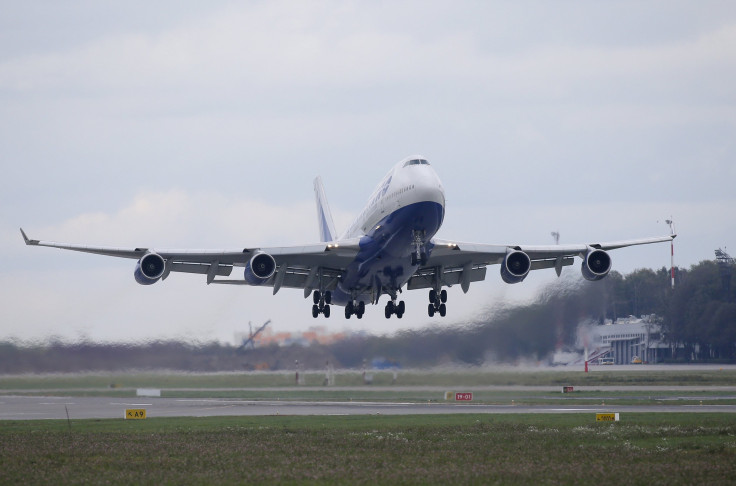Trans-Pacific Partnership: US Aerospace Companies Hope For Increased Trade While Labor Unions Predict Lost Jobs

U.S. aerospace companies are hoping that the Trans-Pacific Partnership deal brokered by the U.S. and 11 Pacific Rim countries Monday will help grow sales across the Asia Pacific region. The agreement of the pact, which is the largest regional trade deal signed in U.S. history, is expected to bring down barriers that have hampered trade across the Pacific while opening up new markets to U.S. companies, according to the White House.
The deal, which now has to pass Congress, could encourage sales of aeronautical items from the U.S. to countries that are also part of the trade agreement. Boeing, for example, which already sells 70 percent of its planes internationally and backed the deal from the start, hopes that the agreement will promote further sales of its aircraft and beat out its European rival Airbus. However, the president of the Machinists Union, which represents aeronautical workers in the U.S., claims that the trade pact deal is bad for the industry and will see jobs shipped overseas.
“On the commercial side of our business, we are long-time supporters of efforts to negotiate agreements that lower barriers to trade because doing so spurs growth in trade, which in turn leads to increased demand for air service and therefore airplanes,” said Tim Neale, a Boeing spokesperson. “We expect there will be increased future demand for airplanes as a result of TPP.”
President Obama's trade deal =
More #MadeInAmerica exports abroad.
More higher-paying jobs here at home. #TPP https://t.co/9GxPOPUoUU
— The White House (@WhiteHouse) October 6, 2015The 12 participating countries in the agreement make up around 40 percent of the current global GDP -- or just under $30 trillion. The U.S. Chamber Of Commerce claims the partnership could boost U.S. exports by $124 billion and add $77 billion per year to U.S. real incomes by 2025. The International Monetary Fund predicts that the world economy will grow by more than $20 trillion, with nearly 50 percent of that growth in Asia.
However, while many companies see the erosion of trade barriers as good for big business, opponents to the deal claim that the trade pact will kill jobs or send them overseas. Tom Buffenbarger, president of the International Association of Machinists and Aerospace Workers, voiced concerns about whether the deal will protect U.S. jobs.
“Negotiated in secret by and for multinational corporations that have no allegiance to any flag or country, the TPP will facilitate the export of American jobs to countries like Vietnam, Malaysia, Brunei and Mexico, which lack fundamental labor rights, some of which even engage in slave labor,” said Buffenbarger, who called on Congress to reject the deal as it decides on it over the next 90 days.
Republican front-runner Donald Trump slammed the agreement in a tweet saying that the “TPP is a terrible deal,” while Democratic candidate Sen. Bernie Sanders (I-Vt.) found himself in the unusual position of agreeing with Trump when he called it “disastrous” and a victory for “Wall Street and other big corporations."
The incompetence of our current administration is beyond comprehension. TPP is a terrible deal.
— Donald J. Trump (@realDonaldTrump) October 5, 2015For Boeing, opening up the Asia-Pacific region for trade aligns with a region that it claims will be one if its most lucrative in the coming two decades. The Chicago-based company forecasts that the 12 countries in the partnership will order 11,640 aircraft (valued at around $1.5 trillion) over the next 20 years, according to an email from Boeing.
While a lot of those orders will be made in the aftermath of the agreement, many of the aircraft will not be built or delivered until many years after due to the time it takes to build each plane. For example, the company is currently producing the Next Generation 737 family aircraft at 42 planes per month, and plans to increase that number to 47 per month by 2017, according to an Aviation Today report.
But the benefits to Boeing go beyond aircraft sales. According to Neale, the newly signed partnership will help the company speed up its procurement process, as many of its suppliers for its new Dreamliner aircraft are based in the Pacific region. “TPP has a Customs Facilitation section that will help speed up the movement of components that we source in some of the countries that are parties to the agreement -- most notably Japan -- where we have some significant suppliers to our 787 and other airplanes,” said Neale.
It’s also expected that the deal will strengthen Boeing’s hold on the aircraft market within the 11 signatory countries and repel competition from rival Airbus, which is also trying to establish itself in the region, according to a CNN report.
Lockheed Martin, one of Boeing’s most fierce defense competitors, has also thrust its support behind the deal, saying that increased trade with the signatories of the agreement “will expand economic opportunities and strengthen our security ties in the Asia-Pacific region” and will open “new markets for U.S. companies,” according to a press release. However, defense sales are not included in the agreement and will continue to be assessed by the Pentagon exclusively.
Still, Richard Aboulafia, vice president of analysis at Teal Group Corp., a Virginia-based think tank that offers analysis in the aerospace and defense industry, said that the Trans-Pacific Partnership would not likely change the business landscape in aerospace or see jobs taken overseas.
“It’s up there with the North Atlantic Free Trade Agreement,” said Aboulafia, referring to a trade pact signed between Mexico, the U.S. and Canada in 1994. “They said it would cause huge outsourcing, the other side said it would create huge business opportunities. The reality is it didn’t codify any business or industry trends that weren’t well underway. The TPP is exactly the same."
© Copyright IBTimes 2024. All rights reserved.






















